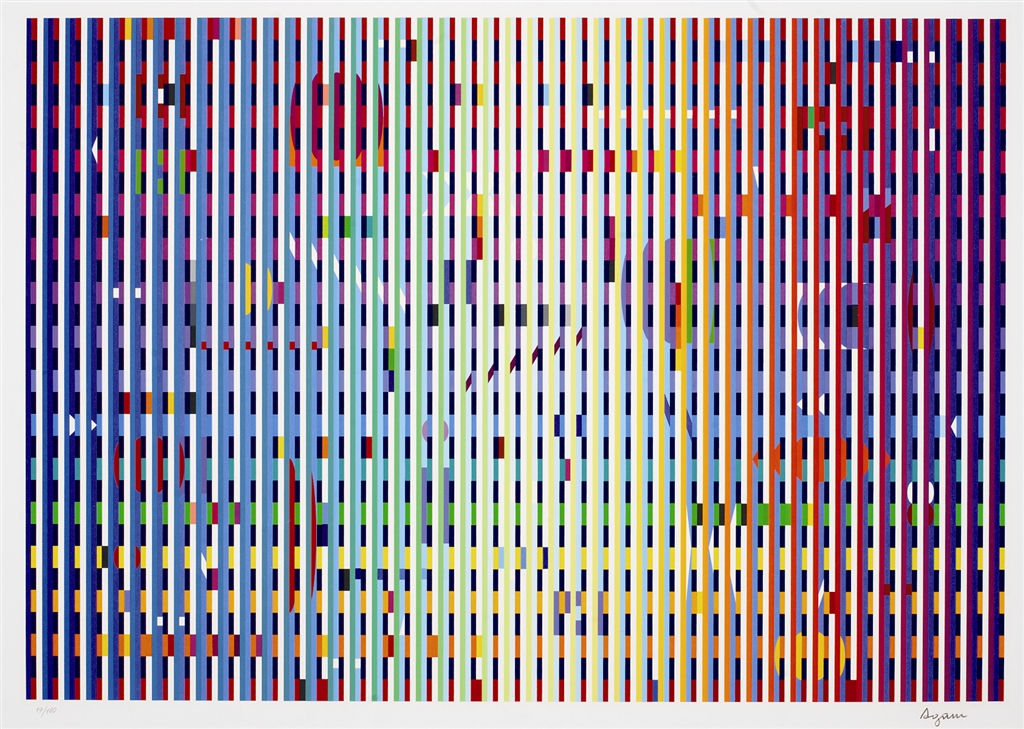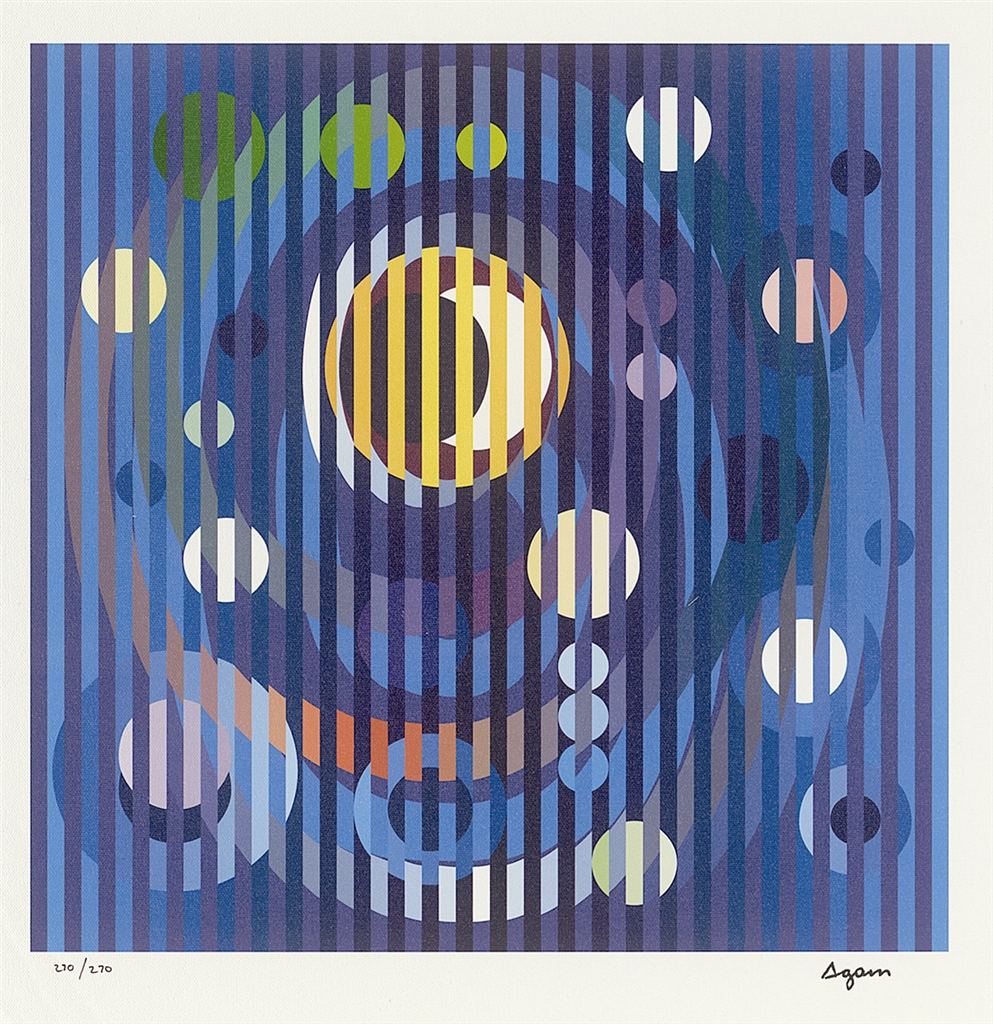Behind the Artist: Yaacov Agam
To Yaacov Agam—progenitor of the Kinetic Art movement—change is inevitable. Born in 1928 in Rishon LeZion, Israel, Yaacov Agam is an internationally-acclaimed, multimedia artist who pioneered an [...]

1928–
A world-renowned kinetic artist, Yaacov Agam pioneered a new form of art that contemplates progress, time, and the role of the viewer.
Agam has become one of the most influential modern artists since his first solo exhibition in 1953. He encourages viewers to reflect on artistic creation and the spiritual values of society through transformative art.
His works are collected worldwide and he has participated in major museum exhibitions all over the world.
READ MORE +Agam was born in 1928 in Rishon LeZion, Israel, to an Orthodox family. Agam attended art school at the Bezalel Academy of Art and Design in Jerusalem. He later moved to Zurich, Switzerland in 1949. In 1950, he studied color theory under the mentorship of artists Johannes Itten and Max Bill.
Renowned architecture critic and historian Sigfried Giedion helped shape Agam’s artistic path while the artist took courses at the ETH Zurich University, inspiring Agam to transform the concept of static paintings.
“In life you look at art and it doesn’t change, but everything changes, but you don’t know how it will change, so you have to go beyond the visible,” Agam once said. “You have to get the notion that what you see can at any moment disappear to be replaced with something else.”

“Holo 9A-11A-12B” (2007)
In 1951, Agam moved to Paris. He held his first solo exhibition two years later at the Galerie Craven in Paris. He quickly grew in fame for his innovative approach, encouraging spectators to participate in art during a time when this was rarely expected. A year later he exhibited three large mobile paintings at the Salon des Realities Nouvelles. This was followed by an exhibition at the Galerie Denise Rene in 1955 titled “Le Mouvement.”
Following these exhibitions, Agam established himself as a pioneer of the kinetic art movement. Since the 1950s, Agam has experimented with new and diverse media, incorporating practices such as painting, sculpture, spatial installation, theater, architecture, writing, digital technology, and education. Regardless of the medium, Agam has remained loyal to the principles and spirit of his early works.

“Rainbow Visual Prayer” (2015), Yaacov Agam. Viewed from five angles.
Agam has achieved international acclaim, receiving multiple commissions and honors and creating public art installations throughout New York, Chicago, and Paris. He even developed a visual learning method for early education curricula that was recognized by the United Nations Educational, Scientific and Cultural Organization (UNESCO).
His artwork can be found in permanent museum collections all over the world, including the Museum of Modern Art in New York and the Hirshhorn Museum and Sculpture Garden in Washington, D.C.
In 2010, Agam became the highest-selling living Israeli artist when his artwork, “Growth,” sold for $698,000 at auction. As further testament to his creativity and success, the Yaacov Agam Museum of Art opened in 2017 in Rishon LeZion, Israel.
Agam’s upbringing played a major role in shaping Agam’s artistic style, such as following the religious commandment of not making graven images. Agam’s nonrepresentational style is an integration of formalist art with that of the Kabbalah (the study of Hebrew mysticism). As such, Agam’s artistic aesthetic is non-figurative, relying instead on geometric shapes, sculpted lines, and bright colors.
The artist incorporates the element of movement and time into his art, inviting viewers to participate with his artwork. When physically passing by an Agam work, the image dynamically changes at various angles. By relying on viewer perception to complete the composition, each work is never truly complete or wholly visible. In this way, Agam transcends representation by denying it.

“Rainbow Bright” (2006)
Agam suggests that his artwork be viewed as intimate visual prayers. He intends for each work to be a journey for the viewer to enjoy and participate in his prayers of hope and peace.
“If you know there is more than what you see, you see the world differently,” Agam says. “You see it as an unexpected, continuous event.”
Agam is the innovator of the “Agamograph,” which uses a lenticular lens to cause his imagery to change when viewed from different angles. He created this groundbreaking medium in 1971.

“Sun and Moon Romance” (2007)
Awards
Museum Retrospectives

“Perfect Disorder” (2017)
Commissions
for breaking news, artist updates, and special sale offers